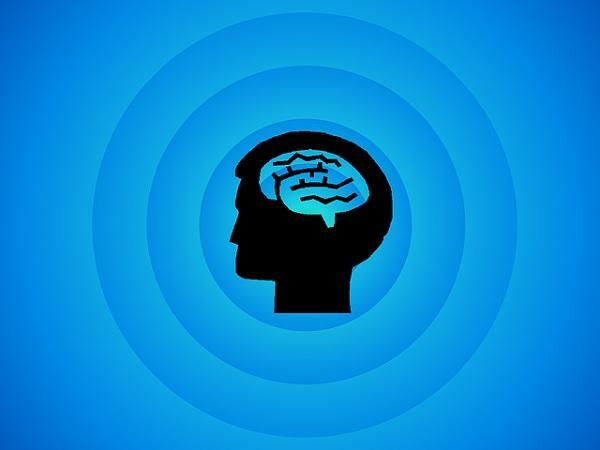
With the objective of interact in a more satisfactory way In the different areas of our life, it is useful to know some aspects of the human personality. The psychological model of Transactional Analysis explains in a simple way its structure and functioning, so knowing it can help us better understand our interactions with the world and with the other. In this study of Online Psychology we are going to discover the relationship between personality and human relationships so that you can better understand our way of being in the world.
Index
- Basic personality structure
- The three states of the "I"
- How "I" states manifest
Basic structure of the personality.
Let's first look at the basic structure of the personality from Transactional Analysis. As a clarification, specify that when I write "child", "adult", "parent" with a lowercase letter I will refer to the real person and when I do it with a capital letter I will be referring to the State of the I of the personality.
The personality of the human being can be structured in three States of the I:
- Parent State (P): behaviors, thoughts and feelings copied from the parental figures that we have had. From it you feel, think and act just like your father or mother did when you were little, or according to the internalized messages of teachers or other relevant adults in your life.
- Adult Status (A): appreciates the reality present in the "here and now" objectively. Calculate the odds and odds based on your experience and knowledge.
- Child Status (N): Contains the innate impulses and memories of your first experiences, how you responded to them, and the positions you took in relation to yourself and others. It is the part that feels, thinks and acts just like it did when you were a child.
In a very simplified way: When I make judgments or values, I am in my Father state. When I think and analyze the possibilities that I have of achieving something and I look for objective information and I plan to achieve it, I am acting from my Adult. When I feel shame, anger, joy or any other emotion, I am in my Child state.

The three states of the "I"
Let's dive a little deeper into the functions of these states:
Functional analysis of the Father State: P
When the person activates her Parent State, it can function in different ways, in relation to how she treats herself and others:
- Positive Nurturing Parent (PN +): protective and considerate treatment: helping, giving adequate permissions, explaining what is right and fair, caressing and comforting when appropriate, taking charge of problems and favoring solutions.
- Negative Nourishing Parent (PN-): overprotective, gives inappropriate permissions and helps by belittling, from a superior posture, too possessive.
- Positive Critical Parent (PC +): can behave by protecting when necessary, giving appropriate rules, advising in a convenient way, ensuring the safety of others.
- Negative Critical Parent (PC-): too critical, judges and evaluates discounting their own abilities or those of the other, prohibiting, accusing, pointing out. Self-conscious or inhibiting, it instills fear. He thinks he possesses the absolute truth, he is full of opinions and prejudices, generally irrational.
Functional analysis of the Adult State: A
It is characterized by its objectivity. It is like a computer that captures the data, combines it and treats it in a logical way to make the most appropriate decision. When the person functions in this way, he does it from his Adult in a positive way (A +).
However, sometimes the person can deceive himself, misinterpret or act too cold and then he will act from a Negative Adult (A-).
Child functional analysis: N
Also in the Child there are different ways of functioning:
- NATURAL CHILD (NN): This part of the Child State is the one that responds impulsively to the sensations of its own body without paying attention to the norms. It is the most natural part, without censorship. However, the NN is not always positive, it can also be fearful or self-centered. If I yawn without covering my mouth in public, I am satisfying the NN's urges, but it is not very appropriate.
- THE LITTLE TEACHER (PF): It is the intuitive, pre-logical part of the Child State that gives us creative solutions. It is like the Adult of the Child State, it seeks the balance between the demands of the exterior and those of its interior. But at the same time it is simple and primitive, it does not reason, so it often makes the wrong decisions and draws the wrong conclusions. Therefore, it is convenient that it works in the person together with the State of the Adult Self.
- ADAPTED CHILD (NAS / NAR): The child, from the moment he was begotten, is in continuous interrelation with his environment. Its adaptation and development process will depend on environmental conditions and how it responds to them. The Adapted Child is the part of our personality that adapts to its environment to adapt and survive. We are all most of the time in the Adapted Child, we must follow thousands of rules to live in society and be accepted in it.
The person, in his childhood, has different possibilities of responding to his environment: he may tend to do what others expect of him, submissively, Submissive Adapted Child (NAS), or can act by doing the opposite or delaying what is asked, Rebel Adapted Child (NAR). This type of behavior begins in childhood and usually continues into adulthood as an automatic pattern of functioning in the world.
When a person waits for the traffic light to turn green or takes his turn when arriving in a waiting room, he is acting from her NAS +; if someone slips into a queue and is unable to be assertive, he acts from his NAS-. In the same way, whoever manifests and fights to overcome an injustice will activate her NAR + and whoever always does the opposite that is asked or bothers to attract attention will be in her NAR-.
How "I" states manifest.
In general, these ego states, they do not manifest themselves in the person in a balanced way. This depends, on the one hand, on the behaviors that our parents have more or less reinforced for us and on the other, on our own temperament. For example, we can observe a very large Parent state, a medium Adult and a Small Child state, in this case, we would be facing a person who lets go for their value judgments and "what should be", paying little attention to the objective data of immediate reality and without taking into account their own emotional part and alien.
Possibly, this person was caressed a lot when he followed the rules and "shoulds" and did not encourage him to analyze the world in an objective way or to pay attention to emotions. Or we can meet a person who has a deficit in his Parent and Adult states and shows a great Child, especially NAS-, so we will be in front of someone very complacent, conformist, dependent, who always asks what he has to make. It is very possible, in this case, that his parents were very overprotective figures and that she lacked living the phase of exploration and assessment of his abilities.
By observing my thoughts, feelings, and behaviors, I can see that some part of my ego states is being little used or undervalued and consequently, I can decide to start practicing behaviors typical of this part. For example, if I realize that I have a very developed Critical Parent, because I spend the day telling others what to do, pointing out their mistakes and taking little into account their abilities, faced with this, I can decide to start promoting attitudes of the Nutritious Father, who I am discounting, having a genuine consideration for the other person, praising his qualities and proposing options from him instead of impose them. In this way, by putting more energy on the Nutritious Parent, it will increase and the Critical Parent will decrease.

In relation to personal interactions, we can keep in mind, from this model, several important aspects. First, communication takes the form of a chain Stimulus - Response, Each response serves as a stimulus for the next. These transactions occur from and to specific states of the ego and the consequences can be diverse depending on the case.
If I am communicating with you, I can choose to address you from any of my three states of self and you can respond to me from any of yours. Most of the time we do not choose it in a conscious way, it is usually unconscious and automatic.
Types of communicative transactions
There are different types of transactions in communication between two people. They can be complementaryIn other words, the answer is given by the state of the self to which the stimulus was directed. For example, if from my Adult I ask “what time is it” and the other answers me from his Adult “it is 4:00 pm” or if a woman, from her State Father tells his husband "Again the shoes in the middle, this can't go on like this" and he answers from his State. His Child "I'm sorry, I won't. more". The wife emits her message from her Father, waiting for the husband to reply from her Child, and so it happens.
However, it may be the case that the receiver of the message responds from a different ego state than expected, giving rise to a cross transaction. For example, in the case of the wife who initiates a communication from her Father, the husband may decide to answer from her Adult instead of from the Child, as she expects his wife, and redirect the communication with a response from her Adult, with a calm voice, “It seems that you are angry, I understand why you feel that way, tell me what you want me to do when respect". With this change, the husband expects his wife to answer him from his Adult, for example, "When you take off your shoes, I would like you to put them in the shoe rack."
Another possibility in communication is when two messages are transmitted at the same time, a direct one, on a social level, which usually occurs from Adult to Adult, and another subliminal, on a psychological level, which generally occurs from Parent to Child or from Child to Parent. For example, the husband says to his wife "What have you done with my pants?" and the woman answers "I have kept them in the closet." At first glance it seems like a parallel transaction, from Adult to Adult, but if we look at the non-verbal message, the tone of voice and the posture, we find that the husband asks with a frown and a severe tone, from her father, and the wife answers with a trembling, high voice and lowering her head, from her Boy.
It must always be borne in mind that in any communication, they can never make us enter a certain state of the self, at most they can "invite" us to enter, we are the ones who decide from where we are going to answer. In the example above, the wife can accept the “invitation” to answer from the Child, or she can choose to do so from her Adult and not follow the lead. I play the husband, saying the same thing but with a calm tone and a neutral, relaxed posture, ignoring the provocation or making him see it objectively.
This article is merely informative, in Psychology-Online we do not have the power to make a diagnosis or recommend a treatment. We invite you to go to a psychologist to treat your particular case.
If you want to read more articles similar to The relationship between personality and human relationships, we recommend that you enter our category of Social psychology.


